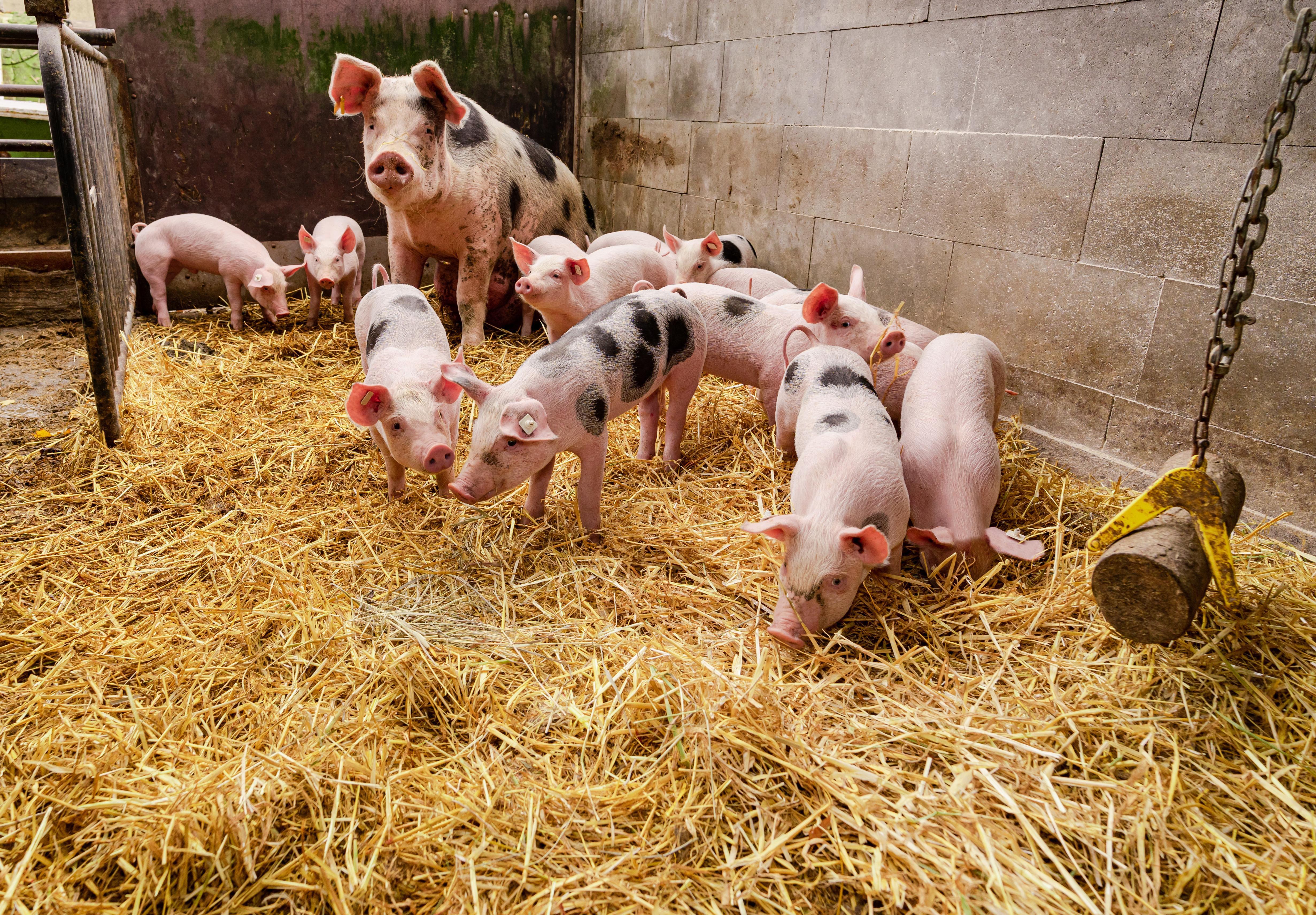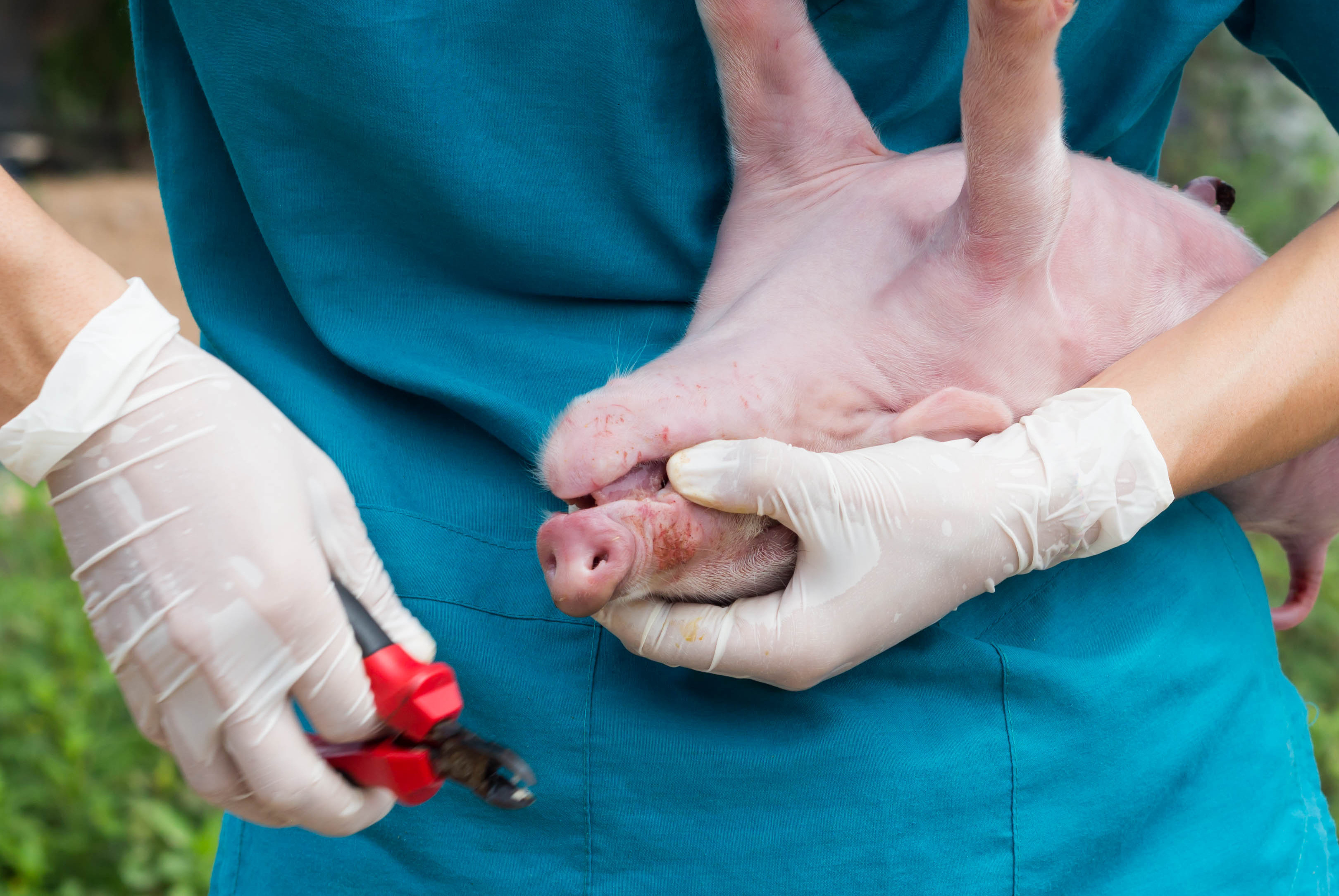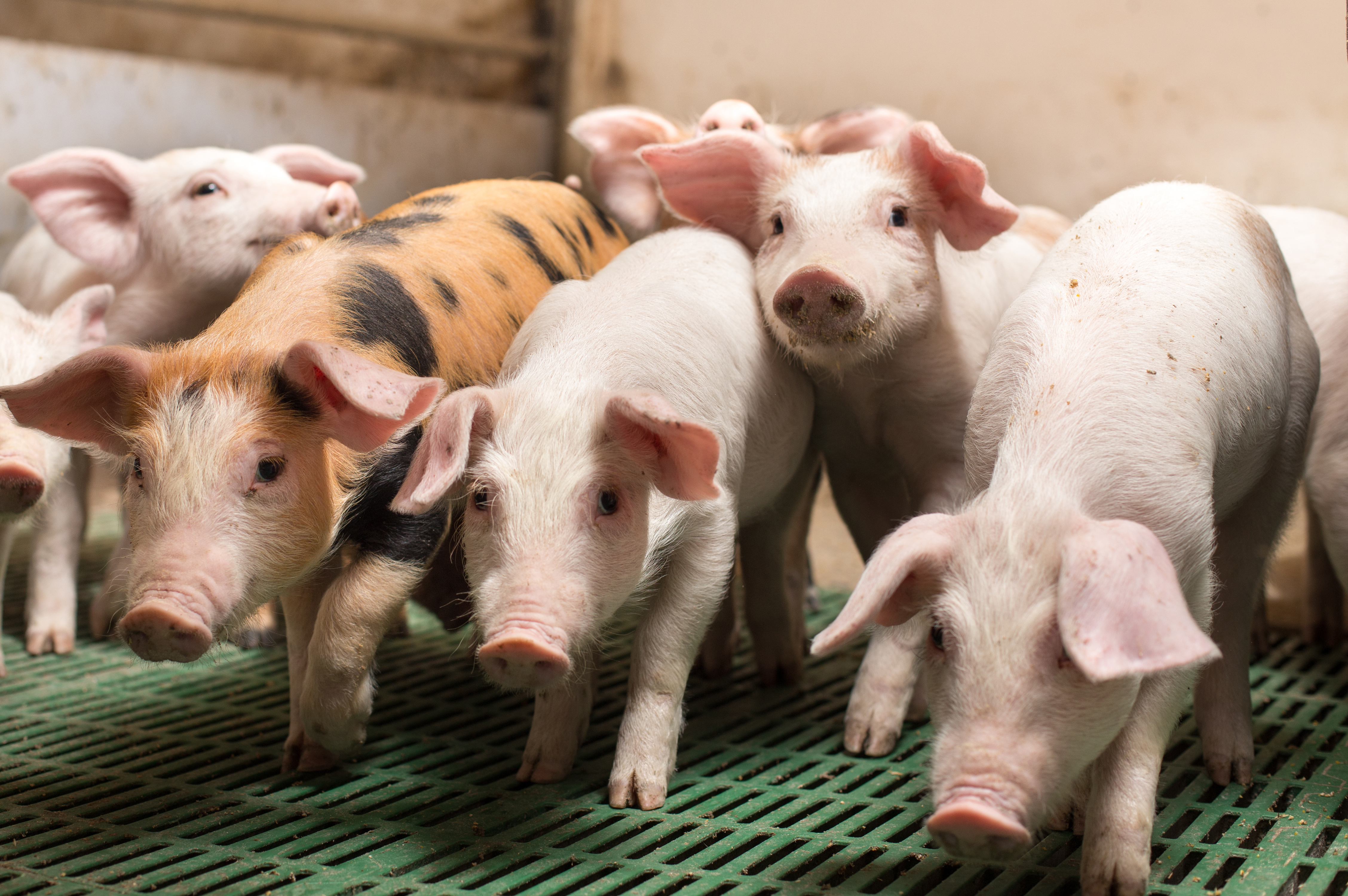



Solutions for ending painful piglet procedures: tail docking
The 3T's Alliance has published its latest conclusions on efficient solutions to end tail docking in piglets and young pigs.Part of Series:
< Previous Article in Series Next Article in Series >
The 3Ts Alliance members have drawn on collective experience and resources in identifying specific solutions for each of the painful piglet procedures. Case study examples of solutions in practice are outlined in the World Animal Protection global business case ‘Sharing Success’.
The Alliance emphasises the importance of keeping tails intact in the interest of overall animal health and welfare. All tail docking or tipping methods cause pain and are a potential vector for infection and therefore a risk factor for antibiotic overuse. Routine tail docking is not permitted in the EU although remains widely practised.
Recent research and best practice examples on large scale commercial farms demonstrate effective phasing out of tail docking through:
- improving underlying issues to reduce tail biting risk; then
- working to phase out tail docking batch by batch and farm by farm.
Routine and treatment use of antibiotics is thereby avoided. A preventative mindset is considered key.
Retail leadership
Retail leadership is key to provide direction for suppliers. Financial incentives may enable the costs of improved systems to be met but are not a precondition for change. For example, some retailers pay a per pig premium for welfare improvements, including intact tailed pigs but companies may also choose to act in the absence of financial incentives. See the World Animal Protection business case, Sharing Success, for examples.
Consumers are often not aware of painful procedures on pigs or associated risks, antibiotic use and welfare issues but World Animal Protection polling results show that when informed, they are very concerned and may change where they shop as a result. The Alliance agrees that proactive retailer leadership is increasingly expected and appreciated by other players in the value chain. Action to end painful procedures is essential to manage risk of association with negative welfare practices and to meet consumer expectations.

At slaughter
Tails should be monitored and scored (length and lesions) at the point of slaughter. The resulting slaughterhouse information must be fed back to farms, in order to resolve risk factors and reduce tail biting incidence. Action plans to mitigate these risks should be implemented prior to the phase out of tail docking. A high percentage of intact pig tails indicates minimum biting and good health and welfare management on farm. Indicator thresholds can be applied, and benchmarking of farms analysed. Tail monitoring also allows for financial incentives that reward intact tails as well as reducing losses or (part-) carcass condemnation due to tail biting abscesses.
The DMRI Teknologisk Institut has developed an automated system to monitor carcasses on the slaughter line to assess the state of pig tails: length and lesions. It should be noted that integrated monitoring of various skin indicators (during processing) has been routine for the broiler industry for decades.
On farm
Pig behaviour
Tail damage and/or biting behaviour should be monitored and recorded on farm. Equally, tail posture on farm is an indicator for pig behaviour and health, and certain postures are predictive for tail biting. There are automated tail posture monitoring devices pending market release.
Buildings
New building design should consider principles of good management to allow for raising of pigs with intact tails. Pen design should include functional areas that allow for drinking, feeding, activity and resting without competition. Optimal design has good environmental conditions, flooring (with slatted areas for elimination and solid areas for resting), bedding material and/or effective enrichment. For example: in Sweden, building design is subject to a state pre-approval process.
Existing buildings can usually be retrofitted to raise pigs with intact tails and design changes can be incorporated when buildings and/or equipment need to be replaced. There are examples of this from Germany and the Netherlands in the World Animal Protection global business case, Sharing Success.
Monitoring and managing barn and pen climate is key, to prevent heat stress and poor hygiene. This includes good ventilation, provision of wallows, showering, monitoring pigs for signs of heat stress, monitoring for dirty pigs and related behaviours. For example, pigs lying in urine or faeces, may be trying to cool themselves.
Adequate pen space is crucial: a minimum of 1sqm per pig is recommended for 50+kg pigs raised for meat. Tropical systems may need to provide more space. Finnish farms use greater than minimum legal EU space requirements. Balcony systems (as developed and successful in the Netherlands) can also increase pen space, as well as allow for functional areas.
Enrichment
Effective enrichment provided throughout the production cycle is considered key. Scientific evidence suggests that providing consistent access to sufficient enrichment available to all pigs throughout the production cycle (e.g. from birth) minimises the risk of tail biting. Pre-weaning enrichment has been shown to reduce the risk of tail biting later in life. Monitoring the use and amount of enrichment and tail biting incidence are crucial to understanding the effectiveness of enrichment. It was unanimously agreed (and is supported by science) that single chains are not adequate or effective enrichment. Best practice and scientific information on the benefits, key qualities, amount and pen location of enrichment is available in fact sheets (World Animal Protection global business case Sharing Success references Farewelldock, various European Commission reports and many other resources).
Care needs to be taken with sourcing and storage of enrichment materials and good biosecurity. For edible enrichment, mycotoxins, internal parasites and rodents can be controlled with appropriate substrate sourcing, storage and presentation. Some farms are growing crops to provide their own enrichment to allow for greater control over potential biosecurity risks. Materials can be subjected to heat treatment to address biosecurity concerns, or they may be sourced from FMD free zones or from disease-free certified sources.
Enrichment can be compatible with slurry management– the use of specific substrate quantities, types, presentation and management can overcome issues with manure handling and management. For example, slurry systems can be provided with extra flushing cycles, solid flooring or trays underneath substrate racks/ baskets to prevent substrates entering slurry systems and extending availability to the pigs.

Nutrition
Management of nutrition and feeding competition is always important (especially during weaning). Long feed troughs mimic litter feeding, allowing for synchronised feeding of all pigs at once and have been very successful in Finland, where tail docking is banned. Restricted feeding is not possible with pigs with intact tails and diluting highly concentrated diets with increased fermentable fibre works well. Liquid feeding can also be successful, though not necessarily suitable in tropical climates (wet feed spoils quicker). Stressful periods when enrichment may need to be increased include mixing of pigs, puberty and other major disturbances or aberrations (e.g. risk signs or outbreak of tail biting).
Health and disease
Resolving subclinical and clinical disease is an important part of the solution. Monitoring health and performance indicators across the production phase can help mitigate risks for tail biting and demonstrate the wider benefits of systems that raise pigs with intact tails. Prevention is key, as post-weaning diarrhoea can be a signifier for later tail biting, and respiratory disease (signified by lung lesions) and lameness (especially OCD) correlate with the prevalence of tail lesions and thus tail biting. Gut health in general is reportedly very important when raising pigs with intact tails. Monitoring various indicators (eg. coughing via herd monitoring systems, lameness, diarrhoea, body lesions and tail position) and improving pig health is important to success and enables optimal production.
Management and training
Good management and training to strengthen pig observation skills is important so that staff have knowledge of behaviour and signs of unrest, tail posture and other risk factors/behaviours for tail biting to ensure good management of long-tailed pigs.
Having an understanding of good pig mixing practices is important. Ideally having same litter or sex groups and minimising unnecessary pig mixing and avoiding abrupt management and feeding changes all reduce unrest. Staff need to focus observations on the pigs’ rear ends, be vigilant and respond rapidly to any early or predictive signs of tail biting, this may include adding extra (and different) types of enrichment to distract pigs from biting.
Monitoring the economic benefit and cost savings on farm from long-tailed pigs, for example, reduced spend on antibiotics and fewer injured animals, reduced carcass downgrading or condemnation due to tail abscesses.
World Animal Protection would like to invite you to join a free webinar to hear more about how pig producers are tackling critical welfare issues in the farming of meat pigs. We present Sharing Success: The global business case for higher welfare for pigs raised for meat.
Join pig welfare experts and thought leaders to hear how pig welfare is good for business. Register for free now to join the one hour webinar at Europe / Stockholm Time 1600hrs November 26th OR Europe / Stockholm 0800hrs November 27th
Registration link for both here: https://worldanimalprotection.clickmeeting.com/












